Cantonese is a Sinitic language spoken by about 85 million people, mainly southern China, particularly in the provinces of Guangdong, Hainan and Hunan, and the Guangxi Zhuang Autonomous Region, and also in Hong Kong, Macau. In 2019 there were about 80 million speakers of Cantonese in China, including 6.6 million in Hong Kong and 507,000 in Macau.
Other countries with signficiant numbers of Cantonese speakers include the USA (1.3 million), Malaysia (1 million), Canada (565,000), Vietnam (500,000), Australia (281,000), Singapore (227,000) and Indonesia (182,000). There are smaller numbers of speakers in quite a few other countries.
Cantonese is the de facto official language of Hong Kong, along with English, and the co-official language in Macau, along with Portuguese. It is the main language of education, business, media and government in both places. Cantonese is used as a medium of instruction in some schools and univerities in Guangdong province, and is also used in the media there.
[top]
Cantonese has appeared in writing since the 17th century. It is used mainly in personal correspondence, diaries, comics, poetry, advertising, popular newspapers, magazines and to some extent in literature. There are two standard ways of written Cantonese: a formal version and a colloquial version. The formal version is quite different from spoken Cantonese but very similiar to Standard Chinese and can be understood by Mandarin speakers without too much difficulty. The colloquial version is much closer to spoken Cantonese and largely unintelligible to Mandarin speakers.
In Hong Kong, colloquial Cantonese is written with a mixture of standard Chinese characters and over a thousand extra characters invented specifically for Cantonese. The extra characters are included in the Hong Kong Supplementary Characters Set (HKSCS).
A selection of characters and words used in colloquial written Cantonese, with Yale romanization, their equivalents in Standard Written Chinese with Cantonese and Mandarin pronunciation, and English translations.
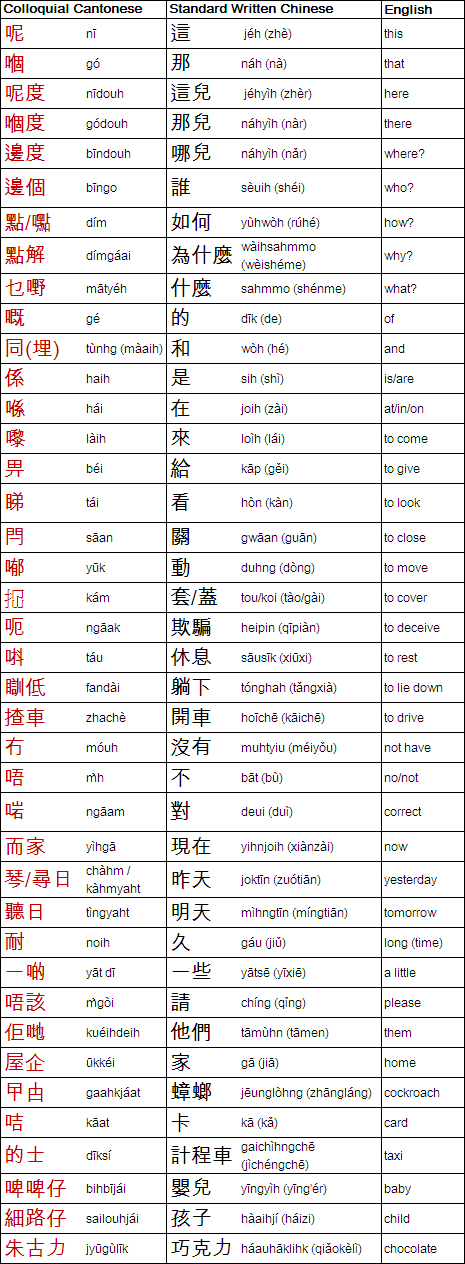
啤啤仔 (bihbījái) is often written BB仔
Since the early 19th century various different systems for writing Cantonese with the Latin alphabet have been used. The first ones were devised by protestant missionaries such as Robert Morrison, who publised a Vocabulary of the Canton Dialect in 1828 using his own unsystematic romanization system.
The romanization system used in Chinese Chrestomathy in the Canton Dialect, which was published in 1841 by Elijah Coleman Bridgman and Samuel Wells Williams became the basis for a number of other romanization systems for Cantonese, such as the Standard Romanization system, the Meyer-Wempe system and the Hong Kong Government Cantonese Romanization.
The Standard Romanization for Cantonese was devised by Christian missionaries in southern in 1888, and was based on a romanization system developed by John Morrison Chalmers in the 1850s.
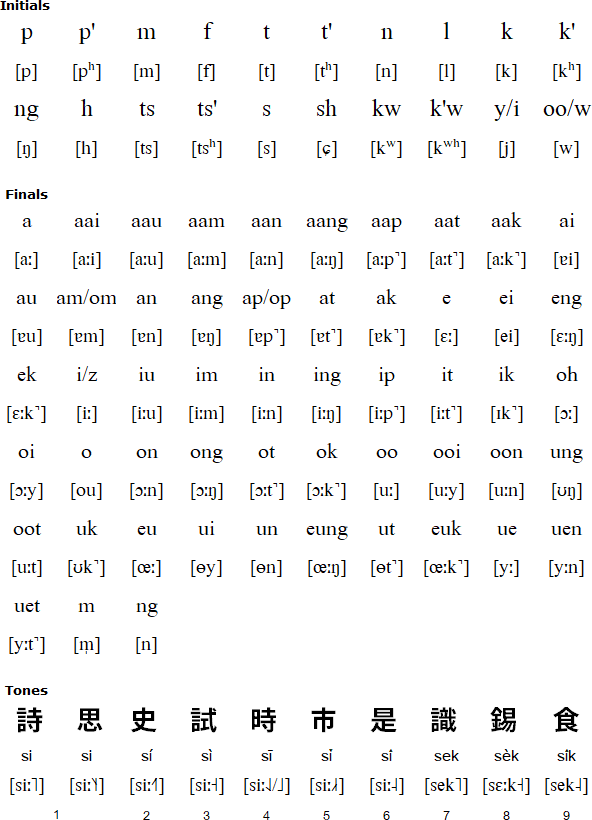
More details
https://en.wikipedia.org/wiki/Standard_Romanization_(Cantonese)
The government of Hong Kong uses a romanization system based on Standard Romanization, which was developed in 1888 by Christian missionaries in South China, and was based on a system devised by John Chalmers, a missionary, in the 1850s. It is used for the romanization of street names and place names, and does not indicate tones.
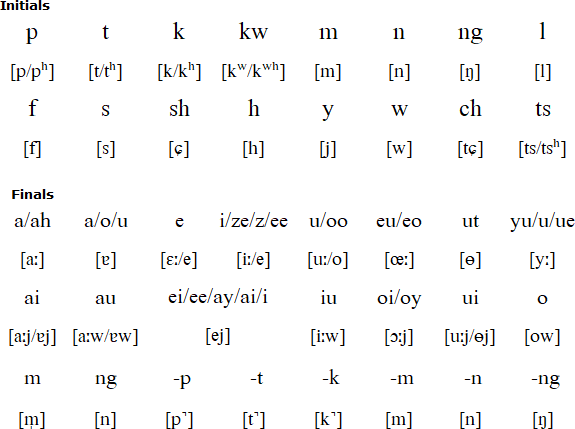
More details
https://en.wikipedia.org/wiki/Hong_Kong_Government_Cantonese_Romanization
The Meyer-Wempe romanization system was used by two Catholic missionaries in Hong Kong: Bernhard F. Meyer and Theodore F. Wempe during the 1920s and 1930s. It is based on the Standard Romanization system of 1888.
More details
https://en.wikipedia.org/wiki/Meyer%E2%80%93Wempe
S. L. Wong, a.k.a. Wong Shik Ling (黃錫凌), was a Cantonese language scholar who in the 1940s devised a Romanization system Cantonese, and a transcription system based on the International Phonetic Alphabet. The IPA-based system is known as the S. L. Wong system (黃錫凌式) and is used in Cantonese dictionaries published in Hong Kong.
More details
https://en.wikipedia.org/wiki/S._L._Wong_(romanization)
https://en.wikipedia.org/wiki/S._L._Wong_(phonetic_symbols)
http://humanum.arts.cuhk.edu.hk/Lexis/Canton/
The Yale romanization system was developed at Yale University by Parker Huang and Gerald Kok. It is designed for American students learning Cantonese so the pronunciation is based on American English.
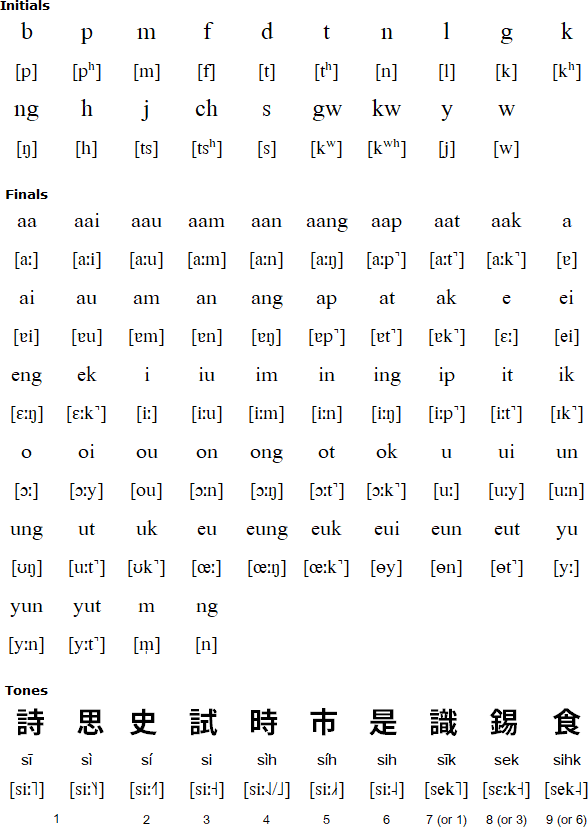
More details
https://en.wikipedia.org/wiki/Yale_romanization_of_Cantonese
The romanization system was developed by the Guangdong Education department in 1960 and revised in 1980 by Rao Bingcai. It is also known as the Canton Romanization or Guangdong Romanization. It is used mainly in Guangdong.
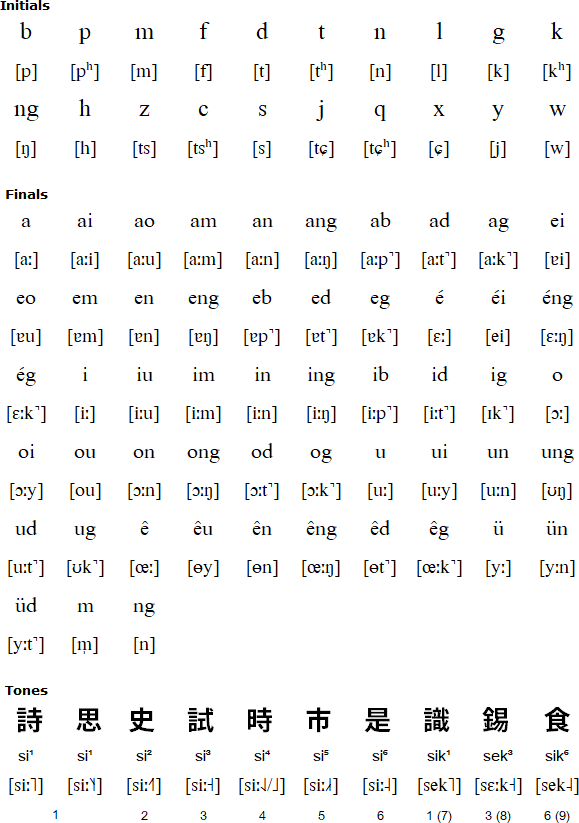
More details
https://en.wikipedia.org/wiki/Cantonese_Transliteration_Scheme
The Sidney Lau romanization system was developed by Sidney Lau, the principal of the Hong Kong Government Language School, for the radio series, "Cantonese-by-Radio", which was broadcast during the 1960s. It is an adaptation of the Meyer-Wempe system.
More details
https://en.wikipedia.org/wiki/Sidney_Lau_romanization
Cantonese Pinyin was developed by the Rev. Yu Ping Chiu (余秉昭) in 1971, and was later modified by the Hong Kong education department. It is currently the standard romanization system for Cantonese used in Hong Kong schools and accepted by the Hong Kong Education and Manpower Bureau. However, some schools use the S.L. Wong system.
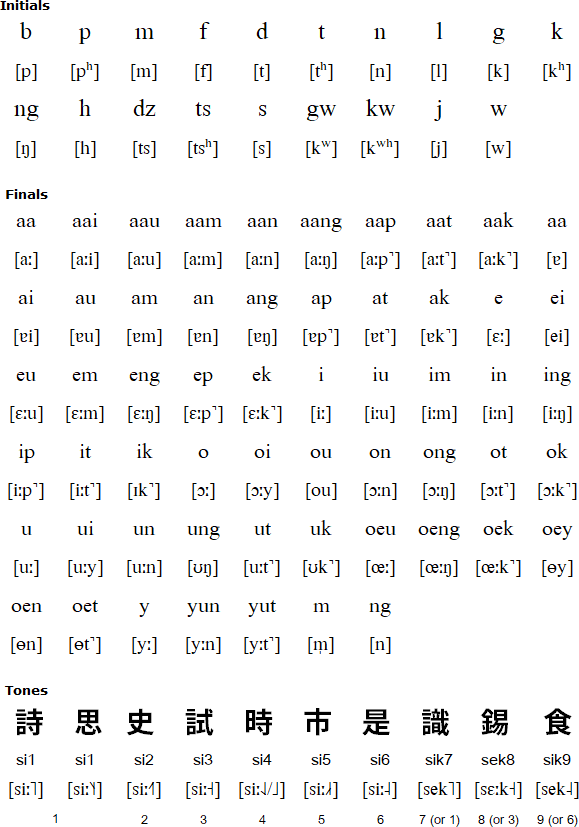
More details
https://en.wikipedia.org/wiki/Jyutping
The Linguistic Society of Hong Kong (LSHK) came up with a new scheme for Cantonese Romanization known as Jyutping, in 1993. Jyutping can be used to write all the sounds of modern Cantonese and uses numbers to mark tones. It can also be used as a computer input method for Cantonese.
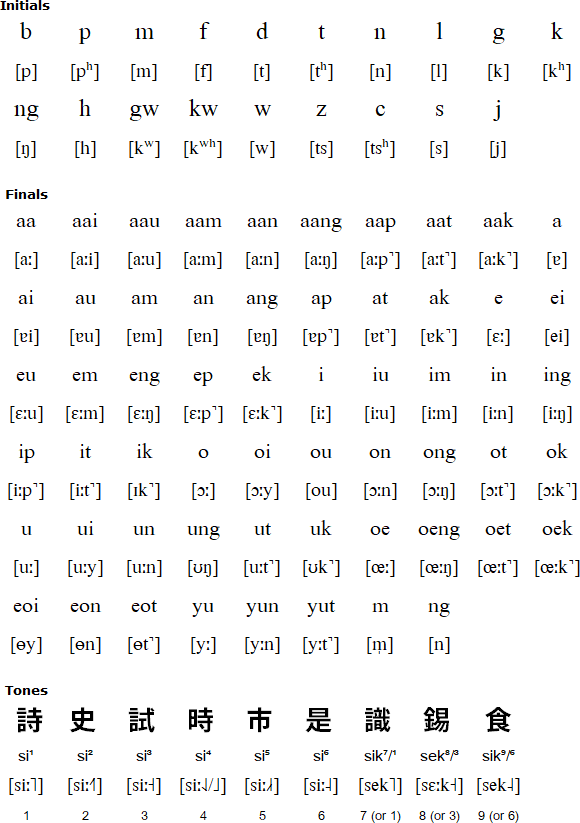
More details
https://en.wikipedia.org/wiki/Jyutping
Penkyamp Romanization is a joint effort by enthusiasts in Guangzhou with a aim of coming up with an alternative script to write Cantonese.
Further details: http://cantonese.wikia.com/wiki/Penkyamp
A romanization system for Cantonese based on Vietnamese spelling conventions and developed by Sky Darmos. More details
Only Meyer-Wempe and Yựtyựt distinguish between the /ɕ/ and /s/ sounds as this distinction is not made by most speakers of Guangzhou Cantonese, and most dictionaries stopped distinguishing them in the early 1950s. This distinction can also be made in Jyutping, though only some people do so.
Download alphabet charts for Cantonese (Excel)
Other Cantonese romanization systems are available.
![]()
Listen to a recording of this text by Cantophilia
Yānyān saangch’eutlāi châuhâi chîyāu ke, hái chiunyīm t’ūng k’iūnlěi sôeng yatlêut p’īngtáng. K’óehitêi kôehiyǎu lěising t’ūng lōehngsam, yīch’e yingkoi yûng hingtâikaan ke kwaanhâi lâi wûsoehng tòehitôi.
Yàhnyàhn sàangchēutlàih jauhhaih jihyàuh ge, hái jyùnyìhm tùhng kyùhnléih seuhng yātleuht pìhngdáng. Kéuihdeih geuihyáuh léihsing tùhng lèuhngsàm, yìhche yìnggòi yuhng hìngdaihgāan ge gwàanhaih laih wuhsēung deuidoih.
Yan⁶yan⁶ saang¹cheut¹°lai⁴ jau⁶hai⁶ ji⁶yau⁴ ge³, hai² joon¹yim⁴ toong⁴ koon⁴lei⁵ seuhng⁶ yat¹°leuht⁶ ping⁴dang². Keuhi⁵dei⁶ geuhi⁶yau⁵ lei⁵sing³ toong⁴ leuhng⁴sam¹, yi⁴che³ ying¹goi¹ yoong⁶ hing¹dai⁶gaan¹ ge³ gwaan¹hai⁶ lai⁶ woo⁶seuhng¹° deuhi³doi⁶.
Jan⁴jan⁴ saang¹ceot¹lai⁴ zau⁶hai⁶ zi⁶jau⁴ ge³, hai² zyun¹jim⁴ tung⁴ kyun⁴lei⁵ soeng⁶ jat¹leot⁶ ping⁴dang². Keoi⁵dei⁶ geoi⁶jau⁵ lei⁵sing³ tung⁴ loeng⁴sam¹, ji⁴ce³ jing¹goi¹ jung⁶ hing¹dai⁶gaan¹ ge³ gwaan¹hai⁶ lai⁶ wu⁶soeng¹ deoi³doi⁶.
yen⁴yen⁴ sang¹cêd¹lei⁴ zeo⁶hei⁶ ji⁶yeo⁴ gé³, hei² jun¹yim⁴ tung⁴ kyun⁴léi⁵ sêng⁶ yed¹lêd⁶ ping⁴deng². Kêu⁵déi⁶ gêu⁶yeo⁵ léi⁵sing³ tung⁴ lêng⁴sem¹, yi⁴cé² ying¹goi¹ yung⁶ hing¹dei⁶gan¹ ge³ guan¹hei⁶ lei⁴ wu⁶sêng¹ dêu³doi⁶.
Yantyant säng cötlay jàwhày jìyaw gê, hãy jeünyim tonk keunlèy seòng yätlòt penkdãnk. kóydèy gòyyáw léysênk tonk leongsämp, yicẽ yënkgöi yònk hënkdàygän gê guänhày lay wùseöng dôydòi.
yằnyằn shangchơtlằi zặuhặi zịyằu gé, hẳi zưnyìm tùng kừnlẹi shợng yǎtlợt pìngdẳng. Kỡưdẹi gợưyẵu lẽisíng tùng lờngsǎm, yìcẻ yinggoi yụng hingdặigan gé guanhặi lằi wụsơng dớưdọi.
All human beings are born free and equal in dignity and rights. They are endowed with reason and conscience and should act towards one another in a spirit of brotherhood.
(Article 1 of the Universal Declaration of Human Rights)
Download a spreadsheet with the above charts and texts (Excel, 54K)
Information about Cantonese | Phrases | Numbers | Family words | Time expressions | Tower of Babel | Cantonese courses on: Amazon.com and Amazon.co.uk [affilate links]
Information about Cantonese
https://en.wikipedia.org/wiki/Cantonese
https://cantolounge.com/complete-guide-learn-cantonese/
https://www.ethnologue.com/language/yue
http://aboutworldlanguages.com/cantonese
Online Cantonese lessons
http://www.cantonese.sheik.co.uk/
http://cantonese.ca
http://popupcantonese.com
http://polymath.org/cantonese.php
http://www.cantoneseclass101.com/
- Learn Cantonese online with CantoneseClass101
- Cantonese Conversations - Understand real Cantonese
- Learn Cantonese with Glossika
Learn Cantonese with Ling
Cantonese phrases
http://linguanaut.com/english_cantonese.htm
https://ilovelanguages.org/cantonese_phrases.php
https://wikitravel.org/en/Cantonese_phrasebook
Online Cantonese dictionaries
http://www.cantonese.sheik.co.uk/dictionary/
http://cn.voicedic.com
http://humanum.arts.cuhk.edu.hk/Lexis/lexi-can/
https://www.cantoneseclass101.com/cantonese-dictionary/
https://cantonese.org/
https://words.hk/
Online Cantonese radio
http://www.rthk.org.hk
http://www.rfa.org/cantonese/
http://www.d100.net/
https://www.tdm.com.mo/c_radio/
https://www.gdtv.cn/tvChannelDetail/89
Linguistic Society of Hong Kong
http://www.lshk.org
Dungan, Cantonese, Fuzhounese, Gan, Hakka, Jian'ou, Mandarin, Puxian, Shanghainese, Taiwanese, Taiwanese Hakka, Teochew, Weitou, Wenzhounese, Xiang
Written Chinese: Oracle Bone Script, Simplified characters, Bopomofo, Types of characters, Structure of written Chinese, Evolution of characters, How the Chinese script works, Xiao'erjing, General Chinese
Spoken Chinese: Mandarin, Dungan, Wu, Shanghainese, Wenzhounese, Yue, Cantonese, Weitou, Min, Jian'ou, Taiwanese, Teochew, Fuzhounese, Puxian, Hakka, Xiang, Gan, How many people speak Chinese?
Other Chinese pages: Chinese numbers (數碼) | Chinese classifiers (量詞) | Electronic dictionaries | Chinese links | Books: Chinese characters and calligraphy | Cantonese | Mandarin, Shanghainese, Hokkien and Taiwanese
Akkadian Cuneiform, Ancient Egyptian (Demotic), Ancient Egyptian (Hieratic), Ancient Egyptian (Hieroglyphs), Chinese, Chữ-nôm, Cuneiform, Japanese, Jurchen, Khitan, Linear B, Luwian, Mayan, Naxi, Sawndip (Old Zhuang), Sui, Sumerian Cuneiform, Tangut (Hsihsia)
Page last modified: 15.03.23
[top]
You can support this site by Buying Me A Coffee, and if you like what you see on this page, you can use the buttons below to share it with people you know.

If you like this site and find it useful, you can support it by making a donation via PayPal or Patreon, or by contributing in other ways. Omniglot is how I make my living.
Note: all links on this site to Amazon.com, Amazon.co.uk
and Amazon.fr
are affiliate links. This means I earn a commission if you click on any of them and buy something. So by clicking on these links you can help to support this site.
[top]